![]()
![]()
![]()
Use LEFT and RIGHT arrow keys to navigate between flashcards;
Use UP and DOWN arrow keys to flip the card;
H to show hint;
A reads text to speech;
25 Cards in this Set
- Front
- Back

|
Mine Workings - These can cause subsidence at the surface when the collapse of the workings will transfer through the rock to the surface. As a rule of thumb this is when the distance between the top of the mine working and the level of the rock nearest the surface (rock head) is less than 10—15 times the depth of the workings. Mine workings are normally at least the same thickness as the seam in which they are worked. |
|

|
Mine Shaft - The route from the surface to the mine workings is the mine shaft. Shafts can suffer deterioration and partial collapse after they have been built on. Shafts should be assumed to be an extreme hazard, in particular on sites intended for construction, unless proved otherwise. The Coal Authority or its agents have jurisdiction over most shafts and do not generally permit new residential development on them or nearby. Shafts may be unrecorded and the positions of shafts on geological maps are not always accurate. |
|
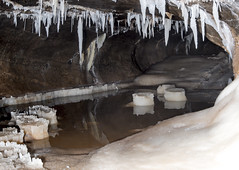
|
Solution Features - These are holes/weak points formed by water running across and dissolving the rock surface at a defect such as a fissure. These rocks contain calcium carbonate (calcareous rock, e.g. chalk or limestone). Solution features can be long thin ‘pipes’ flaring out at the surface, often known as swallow or swallet holes. After formation of a solution feature, a further sedimentary deposit often fills in the solution feature with a different material, commonly sand. Whilst sand can be an acceptable material to build on, when it appears in solution features it can move if it is subjected to groundwater movement. This may occur if a soakaway is positioned on or adjacent to a solution feature. A geological map is unlikely to show solution features on a site, but it can show calcareous rock. |
|

|
Landslip - Active landslip areas are shown on the key of geological maps as ‘landslip’ or, if they are known to have slipped in the past, as ‘foundered strata’. Construction on foundered strata can be carried out in the right circumstances, but instability can result if substantial reprofiling of the area of foundered strata is undertaken. Not all areas of foundered strata are mapped on all geological maps. |
|
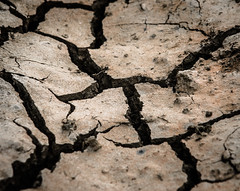
|
Clay Shrinkage and Heave - Probably one of the most common potential problems that give rise to foundation defects is clay. Geological maps will indicate that particular strata are ‘mainly clay’. The ‘high shrinkage’ potential category has a significant risk and, unless known, high-volume change should be assumed, as defined in the National House Building Council Standards 2014 Part 4. |
|

|
Soft/Weak Soils - Soft ground such as alluvium can often be shown on geological maps. Alluvium is usually a drift deposit and can be soft. When overlain with a crust of firm or even stiff clay, careful examination of the map and the slope of strata is important to understand the potential risk of subsidence. |
|
|
What is a "Disturbed Sample" |
A disturbed soil sample is one which has the same moisture content and particle size distribution as the in situ soil, but one in which the in situ structure has been disrupted or completely destroyed.
An auger or pile sample is this |
|
|
What is an undisturbed sample? |
An undisturbed soil sample is one in which the in situ structure of the soil has experienced the least possible disruption. If this is the case then, needless to say, the particle size distribution and moisture content will be the same as the in situ soil.
For example a block cut carefully from the side of a pit of a tube sample |
|

|
This hand auger will produce a disturbed soil sample. |
|
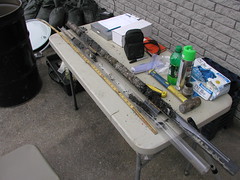
|
This tube sample will produce an undisturbed sample |
|
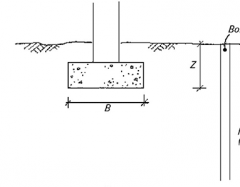
|
The bore hole for the ground investigation should be at least 1.5x the width of the base of the underside of the proposed foundation. |
|
|
What are the four stages of site investigation? |
1. Desk Survey 2. Site Surveillance 3. Ground Investigation 4. Site Report |
|
|
The Desk Survey will typically refer to any of which 5 documents? |
1. British Geological Survey 2. Existing and previous site investigations 3. Ordnance Survey maps (old and new) 4. Local Authority Archives 5. Parish Archives
|
|
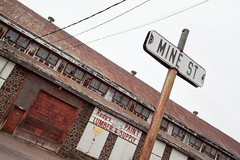
|
This type of sign might indicate a mining area |
|
|
What will conducting a good desk survey help to inform? |
1. The depth of the site reconnaissance 2. Whether specialist will be needed 3. Initial viability of the site and if its worth proceeding |
|
|
What should the surveyor take with them on the site reconnaissance? |
The desktop survey and any other relevant information, plans and documents/ |
|
|
The surveyor should ideally visit the site on ------ S--------- what? |
Two separate days |
|
|
The surveyor should try to visit the site in what type of conditions where possible |
Different types of weather |
|
|
Name eight things that a surveyor should look for during the site reconnaissance. |
1. Topography 2. Water Courses 3. Neighbouring buildings 4. Access issues 5. Traffic issues 6. Vegetation 7. Site boundaries 8 Signs of contaminants |
|
|
What is the first thing you would do when you start to survey the site? |
Walk the site. |
|
|
What methods can the surveyor use to record their findings during stage two of the site investigation, Site Reconnaisance? |
1. Sketches 2. Photos 3. Video 4. Writing 5 Marking existing maps and plans |
|
|
What is the third stage of site investigation? |
Ground Investigation |
|
|
Why should the ground investigation only take place if the desk survey and site reconnaisance have not thrown up issues? |
The ground investigation can be extremely expensive. |
|
|
How can the complexity of the ground investigation be decided and predicted? |
By referring to the desk survey and the site reconnaissance. |
|
|
Remember the difference between B and b for the borehole depth though! |
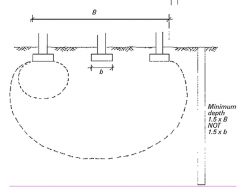
|

